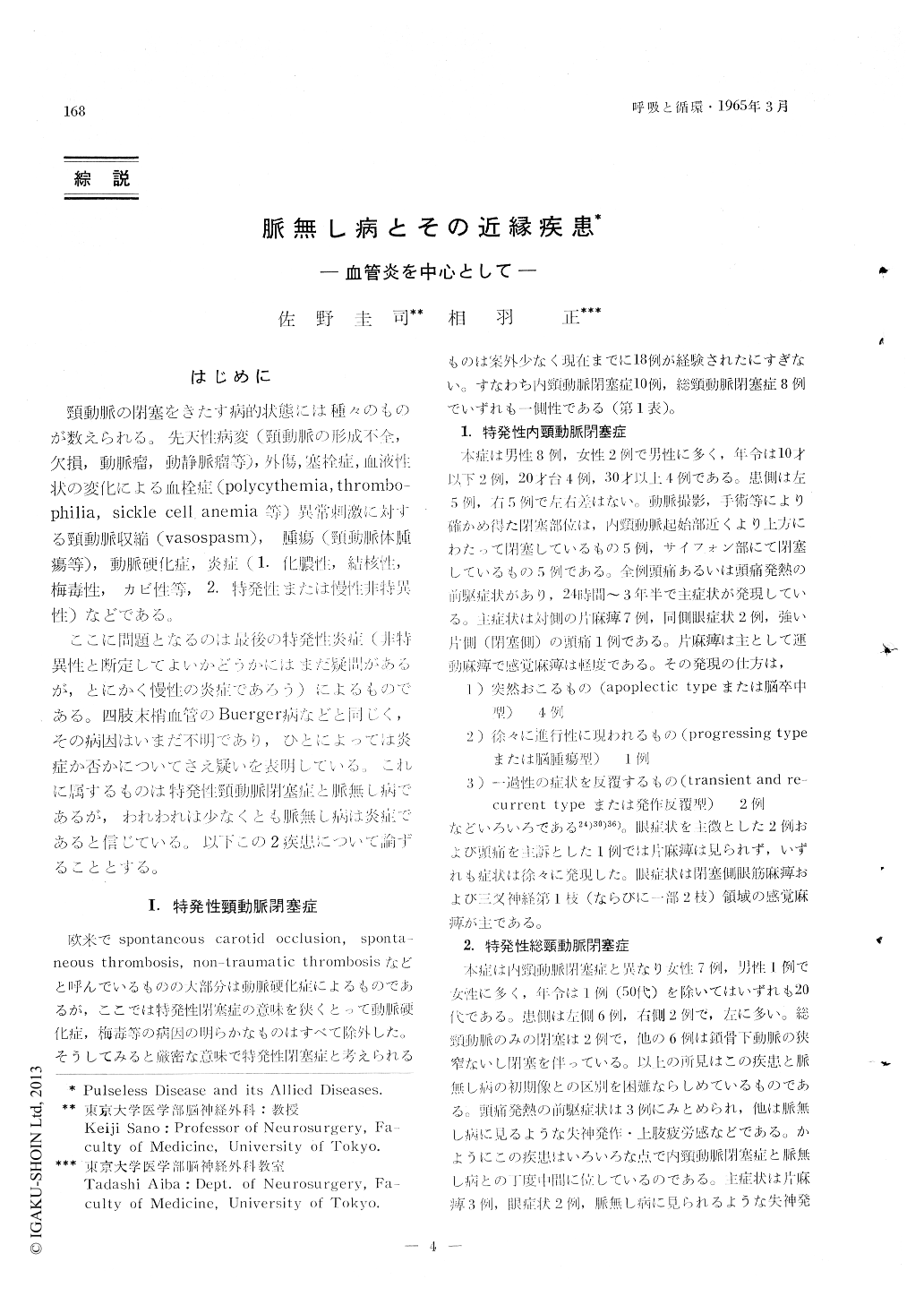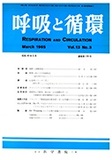Japanese
English
- 有料閲覧
- Abstract 文献概要
- 1ページ目 Look Inside
はじめに
頸動脈の閉塞をきたす病的状態には種々のものが数えられる。先天性病変(頸動脈の形成不全,欠損,動脈瘤,動静脈瘤等),外傷,塞栓症,血液性状の変化による血栓症(polycythemia,thrombo—philia,sickle cell anemia等)異常刺激に対する頸動脈収縮(vasospasm),腫瘍(頸動脈体腫瘍等),動脈硬化症,炎症(1.化膿性,結核性,梅毒性,カビ性等,2.特発性または慢性非特異性)などである。
ここに問題となるのは最後の特発性炎症(非特異性と断定してよいかどうかにはまだ疑問があるが,とにかく慢性の炎症であろう)によるものである。四肢末梢血管のBuerger病などと同じく,その病因はいまだ不明であり,ひとによっては炎症か否かについてさえ疑いを表明している,これに属するものは特発性頸動脈閉塞症と脈無し病であるが,われわれは少なくとも脈無し病は炎症であると信じている。以下この2疾患について論ずることとする。
Among various forms of carotid occlusions and aortic arch syndromes, the pulseless disease is a peculiar entity. Pathology lies essentially in the aortic arch with its major branches and the pulmonary arteries. Histolo-gically this is panarteritis with giant cell granulomas. Thrombosis begins in very characteristic sites, namely in a portion of both subclavian arteries distal to the vertebral ramification and in the distal part of both common carotid arteries just proximal to the bifurcation. Besidas this pulseless disease, there are some other carotid occlusions which show chronic inflammation of all vascular coats similar to the pulseless disease. Patho-logy of these idiopathic carotid occlusions are usually unilateral and limited to the internal carotid or the common carotid alone. The nature of these diseases are unknown.
The pulseless disease is particularily fre-quent in adolescent and young adult women, 58 out of 60 hospitalized cases being females ranging from 8 to 40 years of age in this series. Slow obliteration of the main trunks arising from the aortic arch, including the bilateral common and internal carotid arteries, produces a chronic ischemia of the head and upper extremities. This obliteration mani fests itself clinically by the following symp-toms and signs; (1) no radial pulsation, (2) symptoms and signs referable to the hyper-active carotid sinus reflex, (3) hypotensive ophthalmoangiopathia including heperemia of the bulbar conjunctiva, new growth and anastomosis of the retinal vessels, (4) cere-bral symptoms and signs varied from apoplec-tic at onset to episodic or minor complaints.
The idiopathic common carotid occlusion usually affects young females just like the pulseless disease and 7 out of 8 cases io our series are females in adolescence. To the contrary, the idiopathic internal carotid occlu-sion appears to be common in male without predilection for age, 8 out of 10 cases being male in our series. These idiopathic carotid occlusions usually produce cerebral stroke with or without ipsilateral eye signs such as ophthalmoplegia, sensory disturbances in the region of the ipsilateral first and second branches of the trigeminal nerve or occa-sionally papilledema.
Various kinds of medication including anticoagulants, vasodilatatory drugs and steroids or surgical interventions have been tried. The follow up results of these treat-ments and the prognosis in the long run are rather poor as far as the improvement of the cerebral circulation is concerned. How-ever, there is some evidence that the treat-ments may be at least of some avail.
These results will be and should be impro-ved with advancement in vascular surgery. There will also be hope for preventive treat-ment, if we can elucidate the pathogensis and the true nature of these diseases.

Copyright © 1965, Igaku-Shoin Ltd. All rights reserved.


